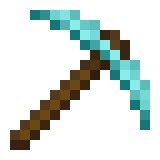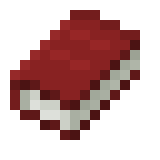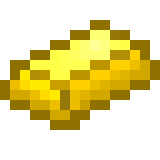Reviewer: Allan Jenks
Developer: Hidden Path Entertainment
Publisher: Hidden Path Entertainment
Category: Strategy, Simulation
Release Date: 2.7.2019
Price (at time of review): $19.99
Buy Defense Grid 2 from the Nintendo Switch eShop here.
Shoot Aliens, Generate Resources
Have you ever been playing Sim City and, just as your metropolis was about to turn into a megalopolis, Bowser rolls in and destroys the downtown mecca and all you can do is watch on in horror until he gets bored and walks back out of town? All you can think about is wishing you had some sort of defensive weaponry built in to your buildings so you could launch a few missiles or bullets at him to knock him down a few pegs—at least the thought may have crossed my mind once or twice! Well, now you can! Sort of, anyway.
Defense Grid 2 is a tower defense game—or rather, a defensive tower game—where you must build different types of weaponized towers to protect your power cores from being stolen by waves of mechanized aliens trying to supercharge their armies. Depending on the type of map you are playing, the strategy can vary from overwhelming them all to wearing them out over time.

Hold On To Your Cores
Basically, you have several waves of aliens entering in from a set point or points on the map. These aliens will follow the shortest path from their point of entry to your core station, and once they have collected their core—or cores, depending on the core capacity of the specific type of alien—they will reverse course back to their point of entry, or in some stages, they will continue off to a separate exit point.
Once they leave the map with the core, you cannot recover it, but if you manage to defeat the marauding alien before they escape, the core will start a slow course back to your core station on the same route from whence it came, and it will reload back into the core station’s storage once it gets back. It can be picked up by another alien that may have made it to the core station when it was empty and returned empty-handed. This will generally happen more often when you are down to your last few cores near the end of a large series of waves, which makes the safe return of the core even more important. The object of the game is to survive through all of the waves without losing all of your cores.

In some stages, the path of the aliens is pretty much set, as there will be no tower-placement blocks available in the direct path, but rather, alongside the pathways. In these stages, the strategy that seemed to work better for me was to just place the most powerful towers I could afford as close to the beginning of the point of entry as possible, essentially taking out as many aliens as I could before they could get very close to the core station. In other stages, however, there are large areas of available blocks on which you can build towers, which allows you to create maze-like pathways for the aliens to traverse, slowing them down with each turn and forcing them to take a longer path with more guns pointed at them. In these stages, the design phase took priority over upgrading all of the towers to maximum power, because I could keep the aliens under a single set of towers for much longer when they have to take the long way around them instead of just a quick sprint through them.

Now, in addition to just choosing the layout of the towers, you also have different types of towers that have different stats and ammunition, as well as different rates of fire and ranges. You start out with your basic set of towers, and acquire new types as you progress through the stages. Here are the types of towers you will be able to use, and what they do:
-
Boost – This tower does not fire anything, but when you build another tower on top of it, you can enhance different attributes of the weaponized towers, from raising their damage percentage, to busting alien shields or cloaks, to increasing the points you get for killing the aliens. These are also great for initial path designs, as they are the cheapest tower to build, and they will still allow you to redirect the path of the aliens, even before you start putting weapons on them.
-
Gun – This is your trusty old go-to turret gun tower. It is the cheapest weaponized tower, so you can build a lot of them fairly quickly and early on in the invasion waves, but it also has a fairly long range and high rate of fire, so it can ward off the swarms cheaply and effectively.
-
Inferno – These towers do what you might think: they burn you. The inferno towers are giant flamethrowers, and are quite effective against larger swarms of aliens, as they target any alien in the vicinity of the spread of the flame, unlike the gun, where only a single target is hit at a time. The downside of the inferno tower is that is does not have a very long range, so it is best placed in those areas where the aliens are traveling down a long corridor or maze-pathway. Also, because it is fire-based, it does not do much to shielded aliens.
-
Laser – This is another way to burn aliens, but faster and more efficiently. The burn damage of the laser also continues to drain life from the target after they move out of range. The range of the laser tower is much bigger than that of the inferno tower, but like the inferno tower, the burn-based attack of the laser does not affect shielded enemies much.
-
Cannon – This tower packs a big heavy punch and has a much larger range than most other towers. It has a very slow rate of attack, however, so it does not work well against tight groups of invaders. These towers are perfect for the back rows of tower arrangements, or the tower blocks that are out in the middle of the map by themselves.
-
Temporal – These towers do not inflict any damage on the enemy, but they send out temporal pulses that slow the enemy down when in range of the waves. These towers are great to place in-between inferno or laser towers in straightaways or maze-path areas, since they give the other towers more time to burn the swarms before they get out of range.
-
Concussion – This tower spins in a circle, launching concussive grenades in all directions. It has a high rate of fire when enemies are in range, but it doesn’t really aim, it just throws grenades everywhere, so it is not great for targeting single strong enemies, but it does a great job thinning out some tightly grouped swarms with heavy damage. It also makes short work of shielded enemies when it manages to hit them.
-
Meteor – This is an extremely long-range tower—the longest of any tower, in fact—and provides heavy area damage with fireballs, especially when upgraded to the max. It cannot target enemies in close-range to it, but makes a great 2nd or 3rd row tower, and works really well for those extra off-the-path-altogether tower blocks that would otherwise have no use in their location.
-
Missile – These towers have a range nearly equal to the meteor, and also works best when placed on the outskirts of the map, as the further the missile travels, the more damage it inflicts. Unlike the meteor towers, missile towers only target a single enemy per missile, but the more you upgrade them the more missiles they fire. A maxed out missile tower is nothing to f*@$ with.
-
Tesla – This here’s your shield buster tower. It fires a very powerful energy ball at the enemy. The energy blast has a chaining effect, but the further down the chain the enemy is, the less damage they will receive; but it does have area damage via this energy chaining. The range on the tesla tower is also fairly big, and is about equal to the gun.

The more you play around with different arrangements, the better you will get at it. Also, since the waves start out slower and gradually get harder and harder, with more and more enemies at once, you have to learn to balance proper design of the stage with still having enough functional infrastructure of towers to keep the earlier waves from making off with your power cores! The resources used to build and upgrade your towers are obtained by both waiting for them to regenerate automatically, and by destroying invading aliens. The rate at which you obtain more resources is fair, and I never found myself just sitting around too long waiting to be able to do something.
Game Modes
There are many different modes to play in Defense Grid 2. The main mode is the Story Mode, where you progress through different stages, expanding upon the story with each new stage you complete. You also get load-outs that add different abilities to the towers, like poison rounds that continue to eat away the health of the enemies after they are out of range. With each new stage, new towers are unlocked and available for use. You can choose the difficulty for each different level as you make your way through the story mode.
There is also a 2-player Story Mode, which is the same as 1-player, except you get the added bonus of fighting for the movements of the screen with a 2nd player instead of just being able to zoom over where you want to look right away. I did not enjoy the 2-player Story Mode. It was harder to focus on a smaller area, and it was sometimes next to impossible to tell where your cursor was on the screen.

Now, there is another 2-player mode in this game, and while it was still a bit obnoxious to fight for the screen movement, this mode actually had some strategy involved that required both players to work together equally. 2-Player Coordinated Mode places you both on a map, but Player 1 can only build and upgrade on blue blocks, and Player 2 can only build and upgrade on red blocks. This mode was more fun, and involved navigating the stages as a team rather than just randomly placing towers wherever. You want to send the aliens through a maze? Figure out which one of you has to build which squares!
There are some other modes as well, which are more for challenging yourself after you’ve destroyed all of the stages with your flawless strategy. Power Outage Mode has the towers set to only activate when the build cursor is over it, or if a core is nearby, which means you have to actively decide which aliens you want to attack, and which you want to ignore. Focal Point Mode allows for damage to occur to aliens when you hover the build cursor over them. No Red Towers Mode only allows for green towers and yellow towers—levels 1 and 2, respectively—and does not allow any towers to be leveled up to red—level 3, which is also the max level. Limited Towers makes you win with a set number of towers, and Frozen Core Mode does not allow cores to float back if the alien is defeated. There’s even a mode that was added by the developers upon a fan’s suggestion: Fully Loaded Mode, which allows for all towers and upgrades, even in the earlier levels of the game.

A Melting Pot of Aliens
Throughout the different waves, many different types of aliens will be unleashed upon your cores. Some are more like basic infantry, like the Walkers or the Swarmers, with low-level health and speed, but high numbers. Some are built more for speedily getting away with the cores while the towers focus on the swarms, like the Racers. Some are more susceptible to twists and turns, like the Rhinos, and some are more susceptible to heat like the Bulwarks. There are also slow-moving tanks with high core capacities, like the Crashers. There are many more, but I’ll let you discover them as you play.

Audio/Video
Visually, Defense Grid 2 was nice. It’s not a mind-blowing visual experience, but it is nicely polished, and while limited in some stages, there is a nice zoom feature that allows you to get a closer look at the action. The stages are well-designed and aesthetically pleasing. You have the ability to change the perspective from which you are viewing the map, so you have full 3-D access to the many different parts and levels of all of the stages.
The soundtrack is also quite nice. The music is epic and appropriate to the situations, and voice acting is just wonderful. Who doesn’t love a cheeky android with a British accent? I know I do! The sound effects are also done very well, and the sounds of the turrets firing along with the lasers burning the swarm and the missiles launching and exploding was indeed a satisfying experience.

Wrapping Up
Defense Grid 2 was awesome! I couldn’t put this game down! I love a good tower defense game anyway, but this one has to be my new favorite in that genre. The only thing I can say that was bad about this game was the 2-player aspect, and if we’re being honest, I’d rather play this by myself anyway, so I don’t even care that much. If you think mixing Sim City and Backyard Monsters—another game I’d absolutely love to see make its way to the Switch eventually—sounds like a good time, then I absolutely recommend picking up this game! You will not regret it!
Score: 9.5/10
Buy Defense Grid 2 from the Nintendo Switch eShop here.
Follow Hidden Path Entertainment
*Review Code Provided by Zebra Partners
Categories
Recent Posts
Tags
#Broforce #dev #DRIVE #FE #indie #indies #Kickstarter #kickstarter #Minit #nindies #Nindies #Nintendo #NintendoSwitch #Owlboy #RaceDieRun #Switch #SwitchCommunity #switchcorps #SwitchCorps #SwitchCorps #Switchiversary #SwitchLewd #SwitchLewds #Switchruary #Twitch #videogames #VitaIsland #YouTube




Leave a Reply